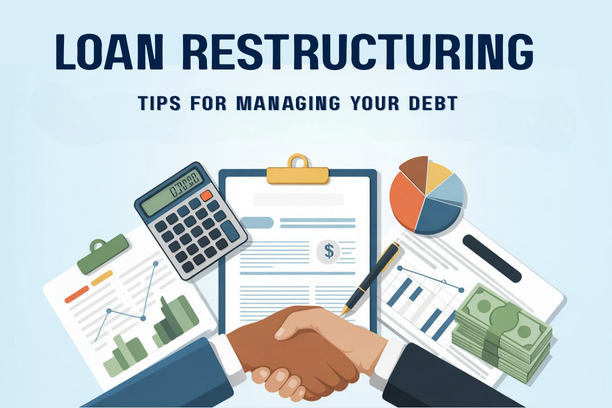A home loan is a powerful financial tool that makes the dream of homeownership accessible to millions of Filipinos. It provides the leverage needed to acquire a valuable asset, build equity, and secure a place for your family. However, like any major financial commitment, a home loan is not without its risks. For a period of 10, 20, or even 30 years, you are taking on a significant liability that is tied to your income, the market, and unexpected life events. This comprehensive guide is dedicated to understanding the risks of a home loan in the Philippines. We will explore the financial, legal, and personal risks you must be aware of and provide you with actionable strategies to manage them, ensuring a secure and confident journey to homeownership.
1. The Dual Nature of a Home Loan
A home loan is a double-edged sword: it offers a great opportunity but also comes with potential perils. A responsible borrower must acknowledge both to make an informed decision.
The Power of a Home Loan: An Opportunity
The primary benefit of a home loan is that it allows you to acquire an asset that would otherwise be impossible to purchase with cash.
- Leverage: A home loan allows you to use the bank’s money to acquire a valuable asset, using only a fraction of the cost as a down payment. This financial leverage enables you to start building equity in your home from day one, with the hope that the property’s value will appreciate over time.
- Long-Term Wealth Building: A home is one of the most reliable assets for building long-term wealth in the Philippines. As you pay down your loan, your equity in the property grows, and its value appreciates.
A home loan is a gateway to financial stability and security, providing you with a tangible asset for your future.
The Potential Perils: The Risks You Must Acknowledge
While the benefits are clear, it is crucial to recognize that a home loan is a long-term liability. The average home loan in the Philippines is 15-20 years, a period long enough to see significant changes in your life and the economy.

- Unforeseen Events: Over the life of a loan, you may face unforeseen events like job loss, a medical emergency, or the death of a family member. Any of these events can disrupt your ability to make your monthly payments.
- Market Fluctuations: The real estate market can be unpredictable. While property values in the Philippines have generally been on an upward trend, a market downturn could cause your home’s value to stagnate or even decline.
- The Financial Burden: A home loan payment is a fixed monthly obligation that you must prioritize over all other expenses. This can be a significant burden if you are not well-prepared.
By acknowledging these risks, you can take a proactive approach to managing them.
2. The Financial Risks and How to Mitigate Them
The most immediate and significant risks of a home loan are financial. These are directly tied to your ability to make your payments and the economic environment.
The Risk of Rising Interest Rates
Many home loans in the Philippines come with a fixed-rate period (e.g., 1, 3, or 5 years) after which the interest rate is subject to repricing based on current market rates.
- How it Works: When your fixed-rate period ends, the bank will reprice your loan, and your new interest rate could be higher than your original rate. This can significantly increase your monthly amortization, which can put a strain on your budget.
- Mitigation Strategy:
- Choose a Longer Fixed-Rate Term: The easiest way to manage this risk is to choose a longer fixed-rate term, such as 10, 15, or even 20 years. While this may come with a slightly higher interest rate at the beginning, it provides you with a predictable monthly payment and protects you from market fluctuations for a longer period.
- Build a Financial Buffer: When your fixed-rate period is about to end, and you anticipate an increase in rates, use your financial buffer to make an extra lump-sum payment to reduce your loan principal and the impact of the new, higher rate.
The Risk of Financial Hardship and Foreclosure
The most dreaded risk of a home loan is the possibility of foreclosure, where the bank repossesses your property due to non-payment.
- Foreclosure in the Philippines: Foreclosure is a legal process that a bank initiates as a last resort when a borrower defaults on their loan payments. The property is then sold at a public auction to pay off the outstanding debt.
- Mitigation Strategy:
- Build an Emergency Fund: Before you even take out a home loan, you should have an emergency fund of at least 3-6 months’ worth of living expenses. This fund will be your safety net in case of a job loss or a medical emergency, ensuring you can continue to make your loan payments.
- Mortgage Redemption Insurance (MRI): A Mortgage Redemption Insurance (MRI) is often a requirement for a home loan, and it is a crucial form of protection. If the borrower passes away, the MRI will pay off the outstanding loan balance, protecting the family from the debt and ensuring they keep the home.
3. The Legal and Procedural Risks: A Matter of Due Diligence
The risks of a home loan are not just financial. There are also legal and procedural risks that you must be aware of to protect your investment.

The Risk of a Faulty Title or a Legal Issue
The property you are buying could have legal issues, such as a dispute over ownership or a lien, which can invalidate your home loan.
- How it Happens: In the Philippines, a property’s title can have a history of previous owners and can be a source of legal disputes. If the title is not clean, or if there is an existing mortgage on the property that has not been properly canceled, you could be in for a legal battle.
- Mitigation Strategy:
- Conduct Thorough Due Diligence: You must verify the authenticity and status of the property’s title. You can do this by getting a certified true copy of the Transfer Certificate of Title (TCT) from the Registry of Deeds and a Tax Declaration from the local Assessor’s Office.
- Consult a Legal Professional: It is always a good idea to consult with a lawyer to review the property’s documents and ensure that the title is clean and free from any encumbrances.
The Risk of Unfair Loan Terms
A home loan contract is a legal document with many pages of fine print. It can contain clauses that are not favorable to the borrower, such as high pre-termination penalties or hidden fees.
- How it Happens: Some lenders may have loan contracts with terms that are difficult to understand or are buried in the fine print. These terms can have a significant impact on your financial future.
- Mitigation Strategy:
- Read Everything: Before you sign anything, you must read and understand every single clause in your loan contract. Do not hesitate to ask questions if something is unclear.
- Compare Offers: Do not just settle for the first home loan offer you receive. Compare offers from multiple banks to find the one with the best interest rate, the most favorable terms, and the lowest fees.
4. A Proactive Approach: The Best Strategies for Risk Management
Understanding the risks of a home loan is the first step; taking a proactive approach to managing them is the key to a successful and secure financial future.
Financial Prudence: Maintaining a Healthy DTI Ratio
A healthy Debt-to-Income (DTI) ratio is your best defense against financial hardship.
- What is DTI? Your DTI ratio is the percentage of your monthly income that goes toward paying your debts. Lenders have a maximum DTI ratio that they will accept, but you should aim for a much lower one.
- The Strategy: A conservative DTI ratio (e.g., below 35%) ensures that even after paying your loan, you have enough money for your daily needs and an emergency fund. This provides you with a financial buffer in case of a job loss or a medical emergency.
The Role of Insurance: MRI and Homeowner’s Protection
Insurance is your safety net against the unexpected.
- Mortgage Redemption Insurance (MRI): As mentioned, an MRI is your family’s protection against the debt. It is a one-time or annual premium that ensures the loan is fully paid off in the event of the borrower’s death, protecting your family from the financial burden and the loss of the home.
- Fire and Homeowner’s Insurance: Fire and homeowner’s insurance are required by banks to protect their collateral. This insurance provides you with the funds to rebuild your home in the event of a fire or other disaster, protecting your investment and your family’s security.
Conclusion
A home loan is a powerful tool for achieving the dream of homeownership, but it is a long-term commitment with significant risks. By understanding the risks of a home loan—from rising interest rates to foreclosure—and by taking a proactive approach to managing them, you can protect your financial future. Through diligent research, careful planning, and a commitment to financial prudence, you can secure the benefits of homeownership while ensuring a stable and secure life for yourself and your family.













